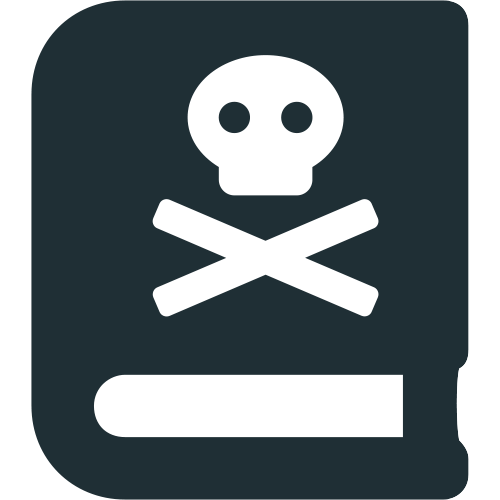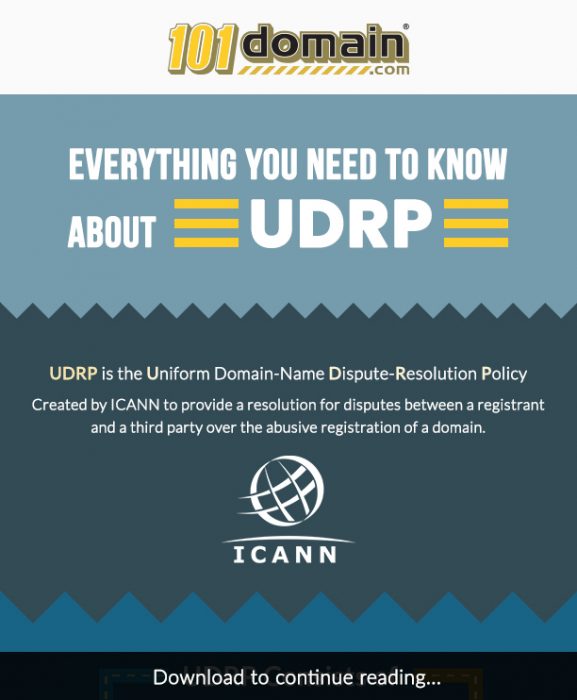
101domain Domain Monitoring Services presents UDRP
We act as your eyes, ears, and enforcer so you can focus on your business!
The Internet is a large and unregulated space or can be if you do not have a second pair of trained eyes monitoring your digital properties and enforcing action when necessary. Prevention is the most reliable key to a successful domain management strategy.
Contact Us +1.888.982.7940
The Uniform Domain-Name Dispute-Resolution Policy (“UDRP”) is a policy that was created by ICANN to provide a resolution for disputesbetween a Registrant and third party over the abusive registration of a domain. UDRP Monitoring and Enforcement can consist of Trademark disputes or cybersquatting cases.
A UDRP can be filed for generic top-level domains (“gTLDs”) and some country code top-level domains (“ccTLDs”) which have adopted the UDRP policy on a voluntary basis. ccTLDs are not required to follow the UDRP policy but many have adopted the policy or have a policy which is similar to the UDRP.
Filing a UDRP complaint is an effective way to obtain a resolution for the abusive registration of a domain that infringes upon a Trademark or is used for cybersquatting. We created this helpful infographic to help better understand everything you need to know about UDRP and our Corporate Brand Services.
What are the advantages to filing a UDRP?
Filing a UDRP with an approved dispute-resolution provider allows for a lower cost, faster resolution, and gives the option to cancel or transfer the domain.
UDRP vs. Court
One of the advantages of a UDRP is the significantly lower cost of filing compared to filing a lawsuit in a court of law. Complainants can file a UDRP with a single panelist adjudicator for up to five domain names for $1,500.00.
If a Complainant wants the UDRP to be decided by three panelists, the cost for up to five domain names is $4,000.00.
In contrast, lawsuits can range in price from anywhere between approximately $20,000-$175,000. It is highly cost effective to file a UDRP instead of a lawsuit to seek resolution for an abusive domain registration.
Second, UDRPs take between one to three months to resolve, in comparison to lawsuits which can take between one to three years.
Lastly, UDRPs allow the Complainant to request the cancellation or transfer of the abusive domain registration.
This is exceptionally valuable to the Complainant because once a UDRP decision has been made and no appeal filed by Respondent, the Registrar has 10 days to transfer the domain to the Complainant, which provides for a quick resolution of the abusive domain registration.
What does the Complainant need to prove when filing a UDRP?
There are three conditions the Complainant must prove to successfully win a UDRP dispute. The conditions may vary if the domain is a ccTLD, as some of the dispute resolution providers for ccTLDs only require the Complainant to meet two out of the three conditions.
The three conditions are:
- Complainant must prove the domain name is identical or confusingly similar to a trademark or service mark in which the Complainant has rights.
- Complainant must prove the Respondent has no rights or legitimate interest in respect of the domain name.
- Complainant must prove the domain name was registered and is being used in bad faith.
Learn more about UDRP +1.888.982.7940
What are the Conditions?

The first condition must include the registration certificates of the trademark being infringed, in addition to evidence that the domain is identical or confusingly similar to the trademark which the Complainant has rights.

Second, the Complainant must prove the Respondent has no rights or legitimate interest in respect of the domain name. Complainant can prove this by demonstrating there is a lack of evidence that Respondent is using or plans to use the domain name in connection with a bona fide offering of goods or services. If the Respondent is not commonly known by the domain and is not making a legitimate non-commercial or fair use of the domain, it may demonstrate that the domain is being used to mislead customers to a domain with no relationship to the trademark or brand.

Lastly, the Complainant must prove the domain name was registered and is being used in bad faith. This is exemplified by providing evidence that the domain was purchased with the sole intent to sell it to the trademark owner for more than the domain is worth. Not only can the Complainant provide evidence the domain was registered with the intent to sell it to the trademark owner, they can provide evidence that the domain was registered to prevent the owner of the trademark from reflecting their mark in the corresponding domain or for the purpose of disrupting the business of a competitor.
Once all three conditions are met, the UDRP panelist(s) rule that either the complaint will be dismissed, should be filed in court, or transferred to the Complainant.
What are some examples of previous UDRPs?
Some recent cases of UDRPs which were ruled in favor of the Complainant include:
- Instagram, LLC v. Andrew Tannous
- Groupon, Inc. v. Lutz-Martin Hoffmann
- Calvin Klein Trademark Trust & Calvin Klein, Inc. v. Domain Administrator, Fundacion Privacy Services LTD
Each of these cases were decided by panelists which ruled that the disputed domain(s) should be transferred to the Complainant.

In the case, Instagram, LLC v. Andrew Tannous, the Complainant owned the registered trademark, INSTAGRAM, in many jurisdictions and was registered on March 15, 2012. The disputed domain, BUSINESSINSTAGRAM.COM, wasregistered on April 5, 2015 after the trademark had been registered and was being used by Complainant to promote their business.
How did INSTAGRAM meet the conditions?
- The Complainant provided evidence that INSTAGRAM is a registered trademark in several countries and is one of the leading companies in the industry. Customers worldwide view this trademark and automatically associate it with the company, Instagram, LLC. By providing evidence of the INSTAGRAM trademark and use within the industry, the first condition of the UDRP was met, “Complainant must prove the domain name is identical or confusingly similar to a trademark or service mark in which the Complainant has rights.”
- To meet the second condition, Complainant provided evidence that the Respondent was infringing on their trademark and had been using the INSTAGRAM logo of a camera lens in the upper left corner of their web page which was identical to Complainant’s INSTAGRAM logo.
- The Complainant contacted the Registrant of the domain requesting they refrain from using the Complainant’s trademark. The Respondent offered to sell the domain and several other domains using the INSTAGRAM trademark for 10 million dollars. This satisfied the third condition in a UDRP complaint, “The Complainant must prove the domain name was registered and is being used in bad faith.”
After all three conditions were met, the panelists made the following decision:
For the foregoing reasons, in accordance with paragraphs 4(i) of the Policy and 15 of the Rules, the Panel orders that the disputed domain names businessinstagram.business, businessinstagram.com, businessinstagram.company, businessinstagram.info, businessinstagram.net, businessinstagram.org be transferred to the Complainant.
To view this case, please visit WIPO.
